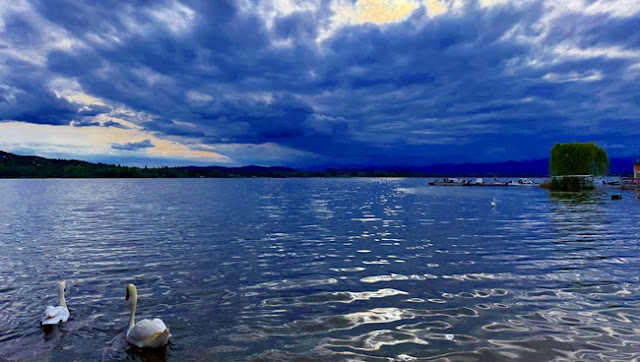Varese 2024
It is my second time to visit Varese. Unbelievably, the first visit was 14 years ago, covering Villa Panza, the Church of Saint Maximilian Kolbe and Sacro Monte. The sightseeing points this time are totally different: churches in the town centre, Palazzo Estense with a gorgeous park and Parco Lugli Zanzi.

Varese is nicknamed ‘Garden City’. It is built on seven hills and embraced by beautiful lakes. Many gardens and green spaces dot throughout the city. Varese offers a wealth of walks and trails for jogging, cycling and walking. Apart from the beautiful nature, Varese is also an enchanting old town with portico walkways, adorable villas and religious monuments.

From the 17th century, nobles and the rich from Milan began to build second residences around Varese's historic centre. Palazzo Estense is among all a magnificent one.
The Duke of Modena and Governor of the Duchy of Milan, Francesco III D’Este, bought the territory with an existing building in 1765 and entrusted architect Giuseppe Bianchi with the renovations necessary to turn it into his summer residence. The gardens behind the villa were transformed into French formal gardens and Italian gardens inspired by the grounds of the royal residence of Schönbrunn.
From Via Sacco, the main entrance is surprisingly understated as the main graceful facade actually looks south onto the Italianate Giardini Estensi. Once ascending to the big fountain, one can admire the elegant "Lombard barocchetto" architecture which white string-course cornices stand out against the pink plaster that fills the entire palace.
The building now belongs to the town hall and cannot be visited, but anyone may swan through the entrance into the gardens, punctuated by a giant fountain, ponds, beautiful flowers, low growing plants, big trees and shaded paths. One can venture up the hill to Villa Mirabello, home of the Civic Archaeological Museum and a 19th century Lebanese cedar tree.
 |
| Cedar of Lebanon |
At time, after visiting the amazing garden, a group of musicians and a soprano singer were rehearsing for an event, possibly for the San Vittore Festival between 29 April and 8 May 2024. We had a chance to glimpse the stunning interior of a hall.
The Baptistery of Saint John, built in the late 12th-early 13th centuries over the original edifice of the 7th – 9th centuries, is the oldest religious building in the town of Varese.
The simple rectangular hall opens towards the presbytery and loggia above, creating a fascinating space dominated in the centre by an octagonal marble baptismal font, placed upon the remains of a previous one, which is peculiarly unfinished.
The Baptistery of Saint John is filled with fascinating frescoes. Dominating the altar is Madonna with two saints (one is St. John).
On the right side is the remains of crucifixion. Another crucifixion with angels around, fainting Mary and disciples, is seen at the wall close to the loggia.
Located southwest of the Baptistry stands the Church of Sant'Antonio Abbot which is also called “della Motta”. In the local dialect “motta” means “hill” and, in fact, the building is located on a small hill a few steps from the historic center.
At a corner of the facade are Sant'Antonio Abate and his pig. St. Anthony the Abbot was a monk in the desert. The hospitaller order of St. Anthony kept pigs. Their fat was needed for healing patients.
Built for a brotherhood, the place of worship was completely redesigned in the seventeenth century by the architect Giuseppe Bernasconi.
 |
| The Glory of Sant'Antonio |
In the eighteenth century, the interiors were then decorated with precious frescoes by Giuseppe Baroffio and Giovan Battista Ronchelli in the Baroque style. The Glory of Sant'Antonio by Ronchelli at the vault wins ‘wow’ from visitors. Equally beautiful is the Exaltation of the Holy Cross at the vault of the choir by the same painter.
 |
| Exaltation of the Holy Cross |
Our last spot of the day is the Parco Luigi Zanzi in the Schiranna area. It was established in the sixties through partial reclamation of the coast of Lake Varese. It becomes one of the most favourite places for families and friends. Cycling path is developed around the lake. The park is an amazing location. The views of the lake are incredible.




























Comments